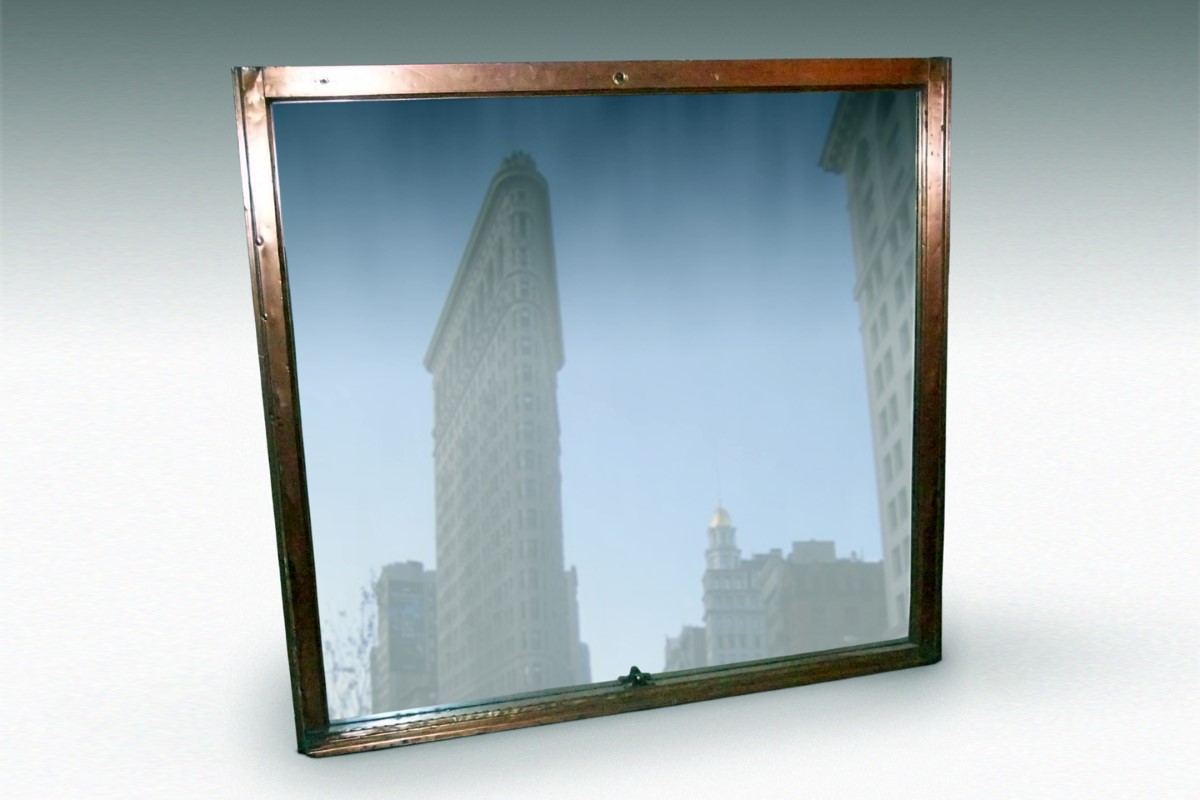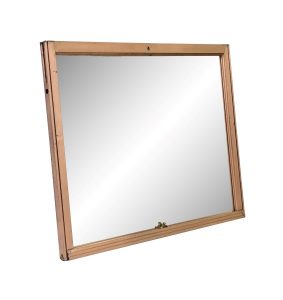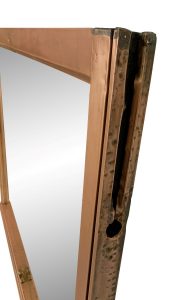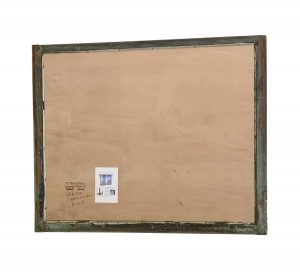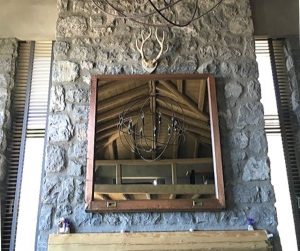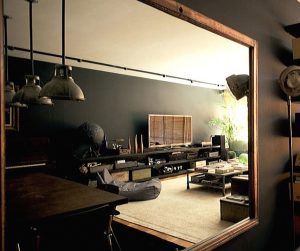Olde Good Things always has architectural treasures reclaimed from some of the most famous historic buildings, just waiting for the right person to find them. These copper-clad window frames from New York City’s Flatiron Building are part of our treasure trove of architectural history.
The 100-year-old windows have been reconditioned with completely sustainable materials into stunning decorative mirrors. The rich copper color of each piece provides a striking contrast to the mirror’s glossy sheen and will add a warm element to any style of interior or exterior project. These windows also provide the warmth and fascination of the rich history of the Flatiron Building.
History of the Flatiron Building
New York City’s legendary Flatiron Building was designed by Chicago architect Daniel Burnham. Considered New York’s oldest skyscraper, the 22-story edifice was built to house offices for Chicago contracting firm George A. Fuller Company and was formally known as the “Fuller Building.” The building’s nickname came from the piece of land it was built on, commonly called the “flat iron.” The structure’s unique triangle shape was designed to hug the wedge-shaped property at the converging corners of Broadway, Fifth Avenue, and 23rd Street in Manhattan.
When plans for the Flatiron Building were revealed, some were afraid the structure that arose straight up from street level to dwarf its neighbor buildings would not hold, particularly in this quarter of the city, famous for windy gusts. The finished structure was labeled a “monstrosity” by the New York Times and “a disgrace to our city, an outrage to our sense of the artistic, and a menace to life” by William Ordway Partridge, sculptor of “The Pieta” at St. Patrick’s Cathedral.
The classic Beaux-Arts structure arose around a steel skeleton. The narrow end measures only six feet across. The facade was covered in limestone and glazed terra cotta and melded French and Italian Renaissance flavors with other architectural trends prevalent on the cusp of the 20th century. Some distinctive architectural features of the Flatiron are columns, medallions, balustrades, friezes, and gargoyles perched along Floor 22.
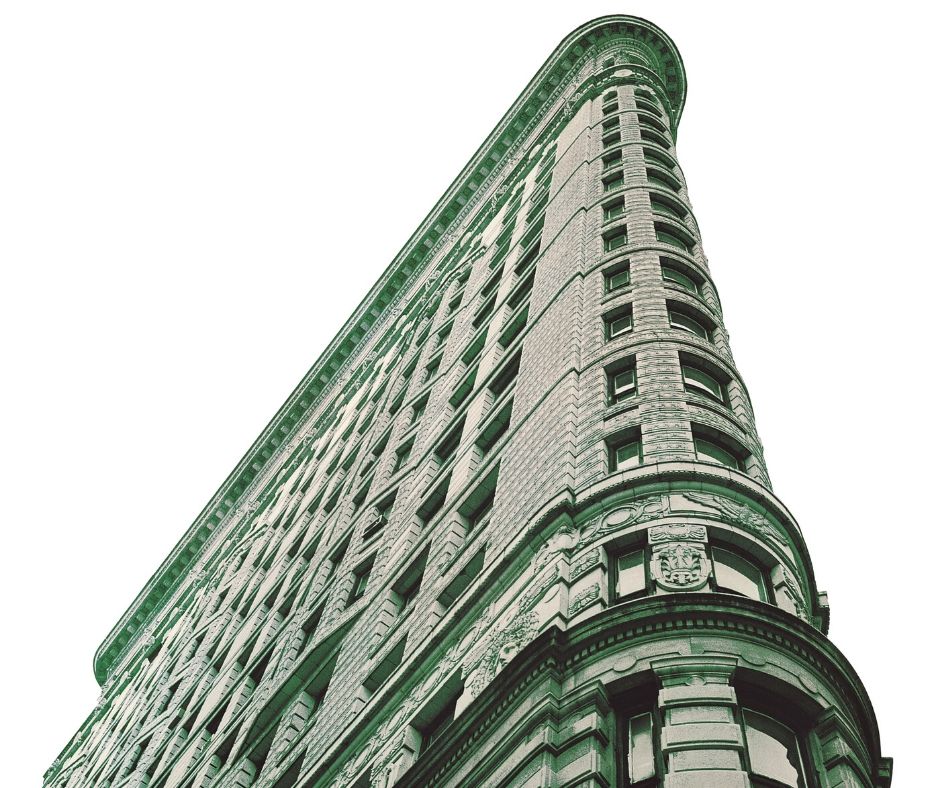 The iconic structure has dominated the intersection since 1902 and claimed the imagination of many as a symbol of New York City. Well-known photographers Edward Steichen and Alfred Stieglitz, along with other famous and lesser-known photographers and artists, used the Flatiron Building as a subject.
The iconic structure has dominated the intersection since 1902 and claimed the imagination of many as a symbol of New York City. Well-known photographers Edward Steichen and Alfred Stieglitz, along with other famous and lesser-known photographers and artists, used the Flatiron Building as a subject.
After The Fuller Company left in 1925, inhabitants of the building included the Imperial Russian Consulate and the Murder Inc. crime syndicate.
From 1959 its occupants included St. Martin’s Press, whose parent, Macmillan Publishers, gradually took over the upper floors and made the Flatiron Building their home until last year. The Flatiron was designated a New York City landmark in 1966 and a National Historic Landmark in 1989. In fact, the Flatiron helped bring the neighborhood back to life due to its popularity.
Acquiring the Windows
The 22-story building was constructed of steel, limestone, and terra cotta. In the early 1900s, it was a common practice to utilize copper-clad wooden windows in order to protect buildings from outside elements. As these windows aged and became outdated, in 2005 the owners began replacing them with more updated and efficient windows. Looking at the windows after removal, one would not have thought much of them as they had layers and layers of paint from years of exterior maintenance. The window company which did the removal, unwilling to toss this iconic building’s windows in the landfill, called Olde Good Things to purchase and hopefully repurpose them. Sure enough, once acquired, our architecturologists stripped the layers of decades of paint from the frame of the windows, only to reveal the deep rosy luster of aged copper. The statement piece “Flatiron Mirror” came to be, purchased by many of our customers who wanted a little piece of this most famous New York landmark.
Flatiron Building Copper Window Mirror
Historical pieces of history from the Flatiron are awaiting new homes at Olde Good Things. Windows are available in two sizes, 44.5 in. H x 52 in. W x 3 in. D and 44.5 in. H x 54 in. W x 3 in. D. Each window is accompanied by the frame’s sticker of authenticity. The top windows are the only remaining windows left in stock, as shown below. There is a very limited quantity in stock, so time is of the essence if you wish to own one. OGT cladded copper windows are versatile as either windows or mirrors, and they have been used by our clients in offices, hotels, salons, and private residences to complement traditional design themes or add a flair of nostalgia and class to contemporary decor.
Customer Showcase Gallery
Click to view all the Copper Window Mirrors available online.
